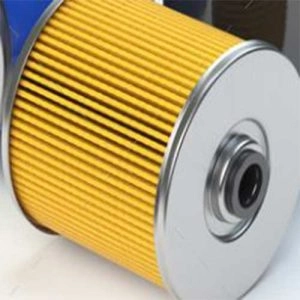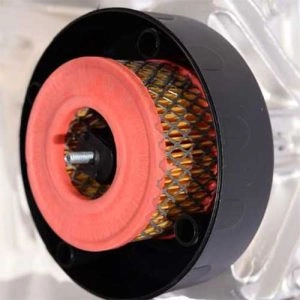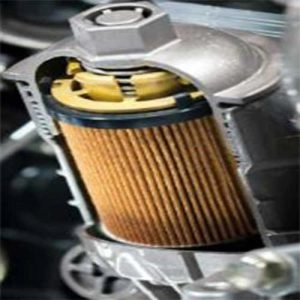The oil siphon, sometimes referred to as the oil filter, is a crucial part of the lubrication system for engine parts and heavy equipment. Its role consists of filtering and sifting the engine oil in the car. It serves to purify the oil from all forms of impurities, dust, and dirt during the circulation of the oil through the engine. Over time, this siphon may get clogged. This is not a single issue, as many car performance problems can result from it. Therefore, it is essential to pay attention to this problem and try to resolve it as swiftly as possible.

This problem can be easily avoided or resolved by completely changing the oil siphon, which maintenance experts regularly recommend. The oil should be changed regularly to maintain the engine's optimal performance and avoid problems. It's worth mentioning that the oil filter is cylindrical in shape, made of a thin metal, and contains a paper or cotton filter. If it malfunctions or is damaged, fortunately, there are several symptoms that indicate this. You can pay attention to these symptoms and know that there is a problem with the filter. This is what we will be talking about in this article, where we will explain 5 signs that the oil siphon is damaged, and clarify when it should be changed. So stay with us.
Signs of Oil Sump Damage

Some experts recommend replacing the oil filter when changing the engine oil. However, you may need to change the filter without changing the oil if you notice certain signs that may indicate it's damaged. In such cases, a new and perfectly working filter needs to be installed. These signs include:
Engine performance weakness:If the oil filter becomes partially or completely blocked, as can happen with the fuel and air filters, you will notice that the car does not accelerate as usual. Also, the engine operation may seem somewhat strange, as the engine cannot generate sufficient power for the car. Here, it is imperative to address the problem quickly. Continuation of the car's operation under these conditions may lead to malfunctioning of the internal engine parts, making the problem bigger and bigger.
Engine temperature increase:Using the oil filter for an extended period without changing it can lead to clogging. In this scenario, the oil cannot flow to the engine, which means the engine does not get any oil to lubricate its internal parts. This results in significant friction between the metal components of the engine, generating heat. If this heat is not dissipated by the oil, the engine temperature will rise. You will be able to see the engine light on the dashboard indicating this issue.
Emission of blue smoke from the exhaust pipe:You should periodically check the vapor and smoke that comes out of your car, as it may indicate more than one problem or breakdown. If the exhaust smoke is blue or gray, this suggests an oil burning issue. This might occur due to blockage of the oil filter, leading the oil to enter the exhaust system to burn and emit these emissions.
Oil Light Illumination:The dashboard of some cars contains a tool for measuring the engine oil pressure. Normally, the gauge shows a certain amount of oil pressure, which may slightly vary under usual conditions. However, if you notice an abnormal or unusual decrease in pressure while driving, the problem is likely due to a decrease in oil pressure. One of the causes of this problem could be a blocked oil siphon that is not allowing the oil to enter the engine.
Hearing metallic friction sounds:As we have mentioned before, the lack of oil entering the engine can cause significant friction among its internal components. In addition to this friction increasing the engine's temperature, it can also lead to metallic noises and sounds of friction coming from the engine due to insufficient lubrication. These sounds can be clearly heard while driving the car.
Also read: The importance of engine belts and when they should be changed.
When should the oil siphon be changed?

The topic is not specific, as it varies depending on the type of car, model, and manufacturer. However, in general, most manufacturers recommend changing the oil filter after driving 5000 kilometers or more. It's worth noting that your car's owner manual includes recommendations on the frequency of changing the oil and filter. It must be noted that driving conditions and the habits you follow impact this, for instance, if you are accustomed to driving in the city or in a polluted industrial area, you need to change your oil filter more often than someone who drives their car on highways and in rural areas.
Likewise, it affects the oil change schedule.Oil SiphonSeveral other factors, such as driving in high temperatures, traveling on rough and unpaved or cobbled roads, climbing mountains, driving in extremely dusty areas, driving at speeds exceeding 170 km per hour, or driving the car at low speeds but for long distances.

Comments